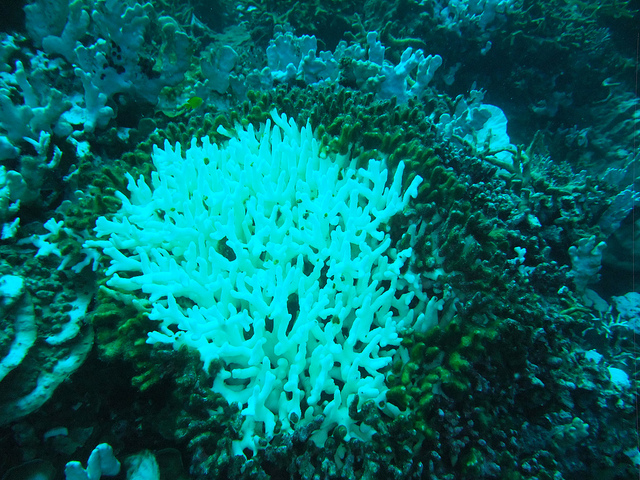Report on the Status of the Recreational Razor Clam Fishery in Northern California
1.0 Executive Summary
This report outlines the current status of the recreational razor clam fishery in Del Norte County, California. The fishery has been reopened following a reduction in domoic acid to levels below the federal action threshold. However, a separate, broader health advisory concerning Paralytic Shellfish Poisoning (PSP) toxins remains in effect for all bivalve shellfish in the region. These management actions reflect a commitment to the United Nations Sustainable Development Goals (SDGs), particularly SDG 3 (Good Health and Well-being), SDG 12 (Responsible Consumption and Production), and SDG 14 (Life Below Water), by balancing recreational opportunities with public safety and the sustainable use of marine resources.
2.0 Fishery Status and Marine Ecosystem Health (SDG 14)
The management of the razor clam fishery is directly aligned with SDG 14: Life Below Water, which aims to conserve and sustainably use the oceans, seas, and marine resources. Decisions are based on rigorous scientific monitoring to prevent adverse impacts on marine ecosystems and human health.
- Del Norte County: The recreational razor clam fishery is now open. This decision follows a closure implemented in November 2023 due to elevated domoic acid. Recent sample testing in June and July 2025 confirmed that domoic acid concentrations are now below the federal action level of ≥20 parts per million (ppm), permitting the resumption of sustainable harvesting.
- Humboldt County: The razor clam fishery remains closed due to continued elevated levels of domoic acid. This precautionary measure prioritizes the health of the marine ecosystem and consumer safety, in line with SDG 14 targets.
3.0 Public Health and Safety Advisory (SDG 3)
Protecting public health is a primary objective, directly supporting SDG 3: Good Health and Well-being. State health agencies actively monitor for multiple marine biotoxins to ensure food safety.
- Domoic Acid: While levels have subsided in Del Norte County razor clams, ongoing monitoring will continue.
- Paralytic Shellfish Poisoning (PSP): A bivalve shellfish health advisory issued by the California Department of Public Health (CDPH) on July 3, 2025, remains in effect for Del Norte County. This advisory warns consumers against the consumption of any sport-harvested bivalves, including razor clams, due to dangerous levels of PSP toxins. The presence of PSP, caused by a different marine plankton species, underscores the complexity of managing marine resources for public health.
4.0 Regulatory Framework for Responsible Consumption (SDG 12)
To ensure the long-term viability of the clam population and promote ethical harvesting, the California Department of Fish and Wildlife (CDFW) enforces regulations that support SDG 12: Responsible Consumption and Production. These rules are designed to prevent overexploitation and ensure equitable access.
- Bag Limit: The daily bag limit is 20 razor clams.
- Retention Requirement: The first 20 clams dug must be retained, regardless of size or condition, to minimize waste and disturbance to the clam beds.
- Individual Harvest: Each person is required to keep their clams in a separate container and may not commingle their take with others.
- Location Specifics: In odd-numbered years, the fishery is open north of Battery Point, Crescent City, in Del Norte County.
5.0 Inter-Agency Collaboration and Public Information (SDG 17)
The effective management of this fishery is a result of strong inter-agency cooperation, a key component of SDG 17: Partnerships for the Goals. The collaboration between the CDFW and the CDPH ensures that environmental monitoring is directly linked to public health outcomes.
Key Resources for Public Information
- CDFW Domoic Acid Fishery Closure Information Line: (831) 649-2883
- CDPH Biotoxin Information Line: (800) 553-4133
- CDPH Recreational Bivalve Shellfish Health Advisory Map: Provides current data on biotoxin testing.
- CDFW Ocean Sport Fishing Regulation Guide: Details regulations in Sections 29.20 and 29.45.
Which SDGs are addressed or connected to the issues highlighted in the article?
- SDG 3: Good Health and Well-being
- SDG 11: Sustainable Cities and Communities
- SDG 12: Responsible Consumption and Production
- SDG 14: Life Below Water
What specific targets under those SDGs can be identified based on the article’s content?
-
SDG 3: Good Health and Well-being
-
Target 3.9: By 2030, substantially reduce the number of deaths and illnesses from hazardous chemicals and air, water and soil pollution and contamination.
- Explanation: The article is centered on protecting public health from water contamination. It discusses the closure and reopening of the razor clam fishery based on the levels of natural toxins. The issuance of a “bivalve shellfish health advisory… warning consumers not to consume any sport-harvested bivalves… due to dangerous levels of paralytic shellfish poisoning (PSP) toxins” is a direct action to prevent illnesses from water-borne contamination.
-
Target 3.9: By 2030, substantially reduce the number of deaths and illnesses from hazardous chemicals and air, water and soil pollution and contamination.
-
SDG 11: Sustainable Cities and Communities
-
Target 11.5: By 2030, significantly reduce the number of deaths and the number of people affected and substantially decrease the direct economic losses relative to global gross domestic product caused by disasters, including water-related disasters, with a focus on protecting the poor and people in vulnerable situations.
- Explanation: The article includes a warning that “ongoing tsunami advisories across portions of the California coast may inhibit coastal access.” This connects to making coastal communities aware of and resilient to water-related natural disasters.
-
Target 11.5: By 2030, significantly reduce the number of deaths and the number of people affected and substantially decrease the direct economic losses relative to global gross domestic product caused by disasters, including water-related disasters, with a focus on protecting the poor and people in vulnerable situations.
-
SDG 12: Responsible Consumption and Production
-
Target 12.2: By 2030, achieve the sustainable management and efficient use of natural resources.
- Explanation: The article details specific regulations for the recreational fishery to ensure the sustainable use of a natural resource (razor clams). It states, “the daily bag limit for razor clams is 20 and the first 20 clams dug must be retained regardless of size or condition,” which are rules designed to manage consumption patterns.
-
Target 12.2: By 2030, achieve the sustainable management and efficient use of natural resources.
-
SDG 14: Life Below Water
-
Target 14.1: By 2025, prevent and significantly reduce marine pollution of all kinds, in particular from land-based activities, including marine debris and nutrient pollution.
- Explanation: The article addresses a form of marine pollution, specifically biotoxins from marine plankton. The entire management action—closing and reopening the fishery—is a response to “elevated levels of domoic acid” and “paralytic shellfish poisoning (PSP) toxins,” which contaminate the marine ecosystem and its resources.
-
Target 14.4: By 2020, effectively regulate harvesting and end overfishing, illegal, unreported and unregulated fishing and destructive fishing practices and implement science-based management plans, in order to restore fish stocks in the shortest time feasible, at least to levels that can produce maximum sustainable yield as determined by their biological characteristics.
- Explanation: The article is a clear example of a science-based management plan in action. Decisions to close or reopen the fishery are based on scientific monitoring: “Clams collected in June and July 2025… all had domoic acid concentrations lower than the federal action level, allowing the fishery to reopen.” Furthermore, it outlines specific regulations (“daily bag limit for razor clams is 20”) to effectively regulate harvesting.
-
Target 14.1: By 2025, prevent and significantly reduce marine pollution of all kinds, in particular from land-based activities, including marine debris and nutrient pollution.
Are there any indicators mentioned or implied in the article that can be used to measure progress towards the identified targets?
-
Concentration levels of marine biotoxins
- Explanation: The article provides a specific, quantitative indicator used to measure safety and manage the fishery. It states that the fishery was closed because domoic acid levels were “exceeding the federal action level (≥20 parts per million (ppm)).” The reopening was based on tests showing levels “lower than the federal action level.” This is a direct indicator for measuring water contamination (Target 3.9) and marine pollution (Target 14.1).
-
Implementation of harvesting regulations
- Explanation: The existence and communication of specific harvesting rules serve as an indicator of a management plan. The article details these rules, such as the “daily bag limit for razor clams is 20” and the requirement that “the first 20 clams dug must be retained.” This indicates progress towards Target 14.4 (regulating harvesting) and Target 12.2 (sustainable management).
-
Issuance of public health and safety advisories
- Explanation: The article mentions multiple public information systems, including the “bivalve shellfish health advisory,” the “Domoic Acid Fishery Closure Information Line,” and “tsunami advisories.” The operation of these warning systems is an indicator of efforts to reduce illness from contamination (Target 3.9) and protect people from natural disasters (Target 11.5).
SDGs, Targets, and Indicators Analysis
| SDGs | Targets | Indicators |
|---|---|---|
| SDG 3: Good Health and Well-being | 3.9: Reduce illnesses from water pollution and contamination. |
|
| SDG 11: Sustainable Cities and Communities | 11.5: Reduce the number of people affected by water-related disasters. |
|
| SDG 12: Responsible Consumption and Production | 12.2: Achieve the sustainable management and efficient use of natural resources. |
|
| SDG 14: Life Below Water |
14.1: Reduce marine pollution.
14.4: Effectively regulate harvesting and implement science-based management plans. |
|
Source: wildlife.ca.gov







